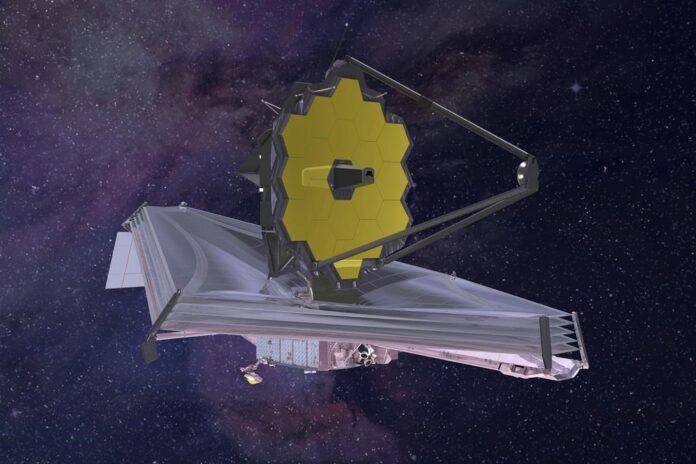A joint report from NASA, the Canadian Space Agency and the European Space Agency has revealed that the $10-billion James Webb Space Telescope (JWST) suffered “uncorrectable” damage left by a micrometeoroid strike in late May.
The paper was authored by more than 200 scientists and outlined the performance of the space telescope during its commissioning phase.
It reported that since launch, JWST has been hit by six micrometeoroids: about one strike per month since the telescope first left Earth on Christmas Day 2021. (A micrometeoroid is exactly what it sounds like: a tiny meteoroid. It weighs less than one gram.)
This was expected by scientists, who anticipated that tiny fragments of asteroids, roughly the size of a grain of sand, would occasionally collide with JWST’s 18 beryllium-gold segments which fold out to create a 6.5-metre mirror.
What they didn’t expect was that a micrometeoroid could cause such significant damage, and so close to the start of JWST’s mission, too. While five of the micrometeoroid strikes had negligible effects, one space rock in particular defied modelling by the JSWT Project.
Sometime between May 23 and May 25, segment C3 of James Webb’s mirror was hit by a micrometeoroid, causing a small, but “not yet measurable” effect to the telescope’s output.
Wavefront sensing measurements showing the quality of the James Webb Space Telescope’s mirror alignment. The bright white mark at the bottom of the array shows where a micrometeoroid struck the $10 billion telescope.
NASA/CSA/ESA
While the impact to the telescope is minor, it caused a “significant uncorrectable change in the overall figure of that segment,” according to the paper.
Trending Stories
As Hockey Canada re-opens alleged sex assault probe, here’s what 2018 players say so far
After 2 years in a coma, U.S. woman wakes, names brother as attacker
Engineers working on the telescope were able to realign the segments of JWST’s mirror to adjust for the damage.
When the micrometeoroid strike first occurred, scientists seemed unworried, with NASA stressing that JWST, also referred to as Webb, was still exceeding all expectations.
But the tone of this new report conveys a bit more concern, with scientists writing that “the largest source of uncertainty (with the longevity of the JWST) is long-term effects of micrometeoroid impacts that slowly degrade the primary mirror.”
The damage that was sustained by segment C3 “exceeded prelaunch expectations of damage for a single micrometeoroid” and has prompted scientists working on JWST to do further modelling and investigations.
Researchers wrote that the kind of damage sustained to segment C3 may have been a rare, once-in-several-years event, though they are still investigating if the telescope “may be more susceptible to damage by micrometeoroids than pre-launch modeling predicted.”
One solution that scientists posited was minimizing the time that the telescope spends pointed in the direction of orbital motion, which they found has a statistically higher rate of micrometeoroid strikes.
Despite the damage, researchers found that “almost across the board, the science performance of JWST is better than expected” — so space fans shouldn’t fret too much.
© 2022 Global News, a division of Corus Entertainment Inc.



